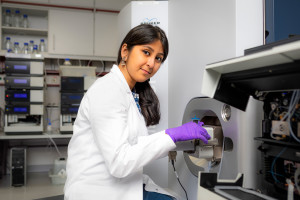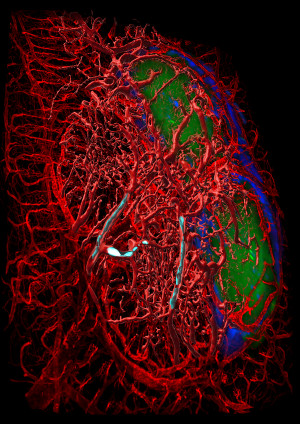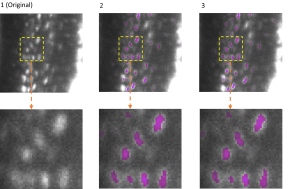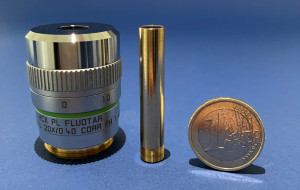Dortmund, 7th February 2025
Neutrophil granulocytes, a type of immune cell, are indispensable for the defense against pathogens. However, if they migrate into injured tissue, for example into the brain after a stroke, they can promote chronic inflammation and cause long-term damage. To analyse the proteins of neutrophils in sites of inflammation and thus their functional dynamics, it takes millions of these immune cells – a problem, because often only few cells are found in these sites. Researchers at ISAS, the University Hospital Essen and the University of Münster have therefore developed a method that enables mass spectrometric analysis using just 1,000 neutrophils. Their work opens up new possibilities for the evaluation of immune responses within individual inflammatory foci. The researchers recently published their results, including a freely accessible database and a neutrophil proteome web service, in the journal Molecular & Cellular Proteomics.
Analysis of the neutrophil proteome, i.e. the majority of all expressed proteins, can provide valuable insights into the functional dynamics of neutrophils under disease conditions. However, although neutrophils make up around 60 percent of leukocytes (white blood cells) in healthy people, there are often fewer than 1,000 cells in inflammatory foci. The availability of sample material can therefore become a problem, particularly with rare populations of neutrophils, such as from tumours. Until now, scientists had to pool cells from several people or animals. “With our approach, we can analyse the proteome of neutrophils using only 1,000 cells from a single inflammatory focus in a single person or laboratory animal. This not only allows more specific neutrophil analyses, but also conserves sample resources, making it especially beneficial for keeping animal numbers low,” reports Susmita Ghosh, first author of the study and PhD student at ISAS.
Publicly accessible and comprehensive data collection as a reference value
In order to reduce the number of cells required for proteome analysis using liquid chromatography mass spectrometry (LC-MS), the ISAS researchers optimised protein digestion during sample preparation as well as the LC-MS data acquisition method. This enabled the scientists to create comprehensive, species-specific spectral libraries using neutrophils from the blood of five healthy humans and five healthy mice. The data collections respectively comprise approx. 5,300 human or approx. 6,200 mouse proteins. and provide valuable insights into the proteomic differences between human and murine neutrophils. The spectral libraries and neutrophil proteome web service are publicly accessible, allowing the scientific community to use them as reference values for their own neutrophil analyses.
Neutrophil Proteome Web Service
Bioinformatics researchers at ISAS have interactively visualised all proteins and their copy numbers.
(We would like to point out that data will be transmitted to Zenodo after activation of the link.)

Susmita Ghosh uses the mass spectrometer to analyse neutrophils granulocytes. The 28-year-old joined ISAS in 2021 as a doctoral student in the Biofluorescence research group.
© ISAS / Hannes Woidich
Tabasco sauce proves: Method is suitable for various inflammation models
The researchers validated their method by examining neutrophils in two different scenarios. First, they analysed neutrophils from the brains of mice after a stroke. The cells responded to the low-glucose environment by increasing their mitochondrial activity and producing more reactive oxygen species. In addition, the scientists examined human neutrophils. To simulate a transient inflammation in the oral cavity triggered by the nervous system, seven test subjects rinsed their mouths with a Tabasco-containing solution at the project partner in Münster. This caused neutrophils to migrate from the bloodstream into the inflamed tissue. There was evidence that these transmigrated cells also underwent functional changes after migration which the researchers also validated by flow cytometry. The two very different scenarios show: The method, including the spectral library, is suitable for various inflammation models.
Even lower cell numbers are planned
The scientists are already working on further improving their method, reports Ghosh: “In the long-term, we want to enable proteomic analyses for a handful of neutrophil numbers, for example for particularly small subpopulations or even individual cells. We have already seen promising initial results with just five cells.”





